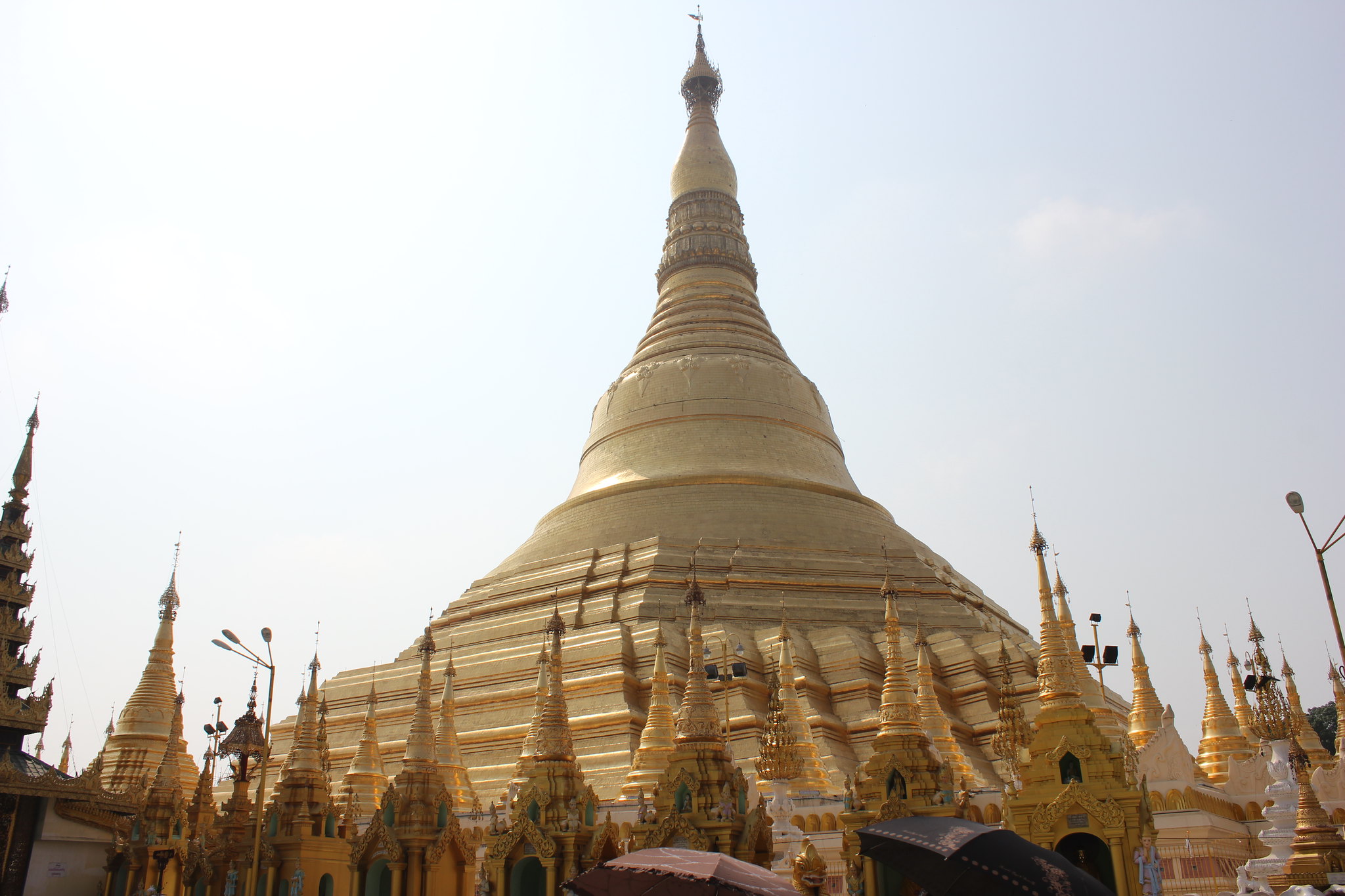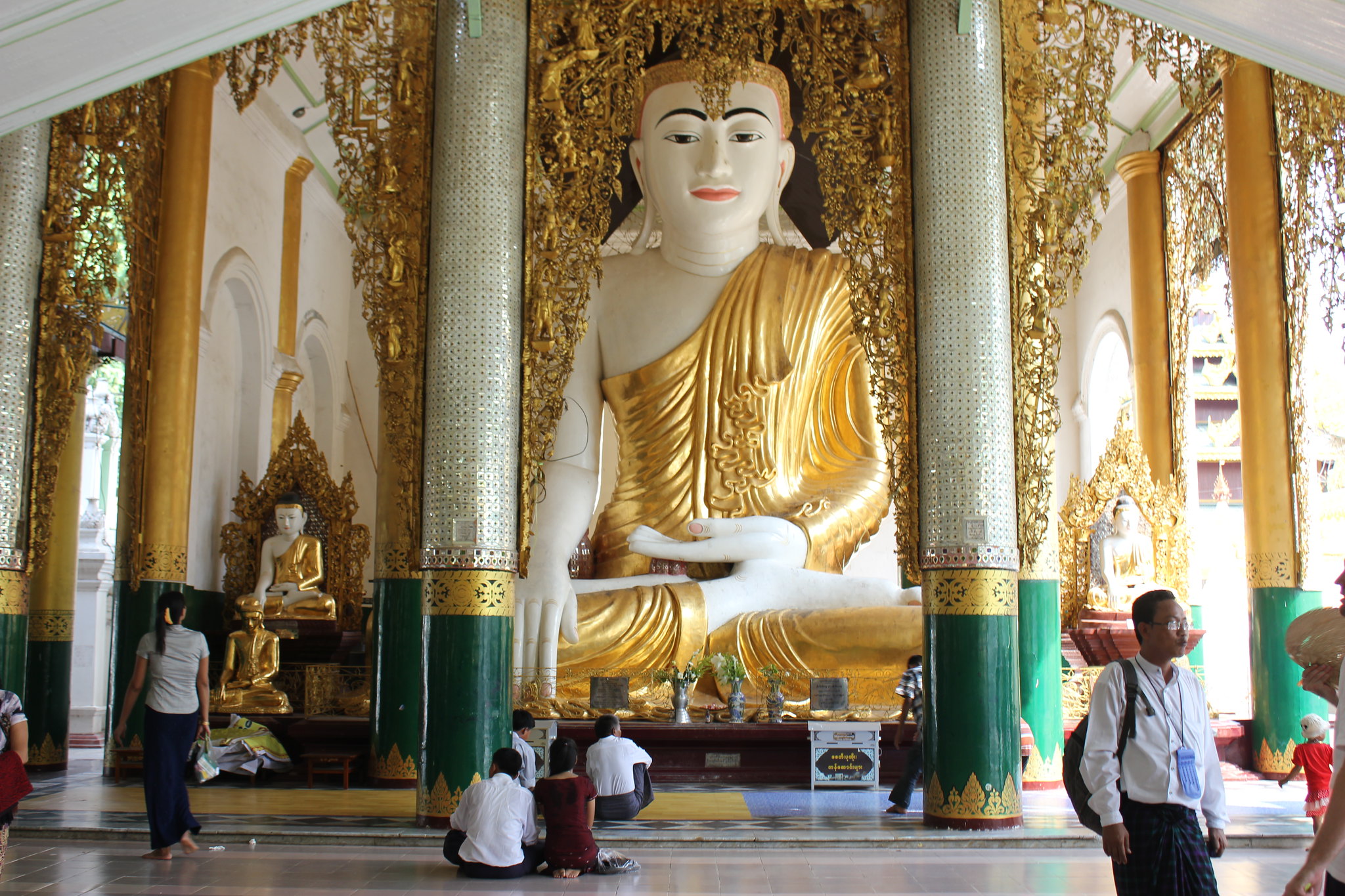
When we decided to visit Myanmar, the Shwedagon Pagoda was at the top of my list. All the photos I poured over looked breathtaking, and I must admit I was not disappointed when I finally got to visit it in the flesh.
 The glorious Shwedagon Pagoda.
The glorious Shwedagon Pagoda.
Our guide, Mr Oong, had a smooth dark skinned face and a beautiful wide grin. He greeted us in the Burmese way – traditional yet excited, with sentences like rapid fire – “Mingalaba! Thank you for visiting my country! What do you think? Today we will see the most important temple in Burma!”. As we walked from the visitor entry to the complex, he waved his arms and gestured to Patrick and John’s longyis.
“Longyis, yes! Very comfortable!”
Upon entering the pagoda itself, I was instantly overwhelmed. The stupa rose up before us, a mountain of dazzling gold, with maroon-clad monks and nun in light pink padding barefoot across the marble. People swarmed around the pagoda, edging past us effortlessly, making offering at different planetary posts (your planetary post is based on what day you were born on, thus also determining your animal, colour and planet), lighting incense and praying. Some applied gold leaf to Buddha images or twirled prayer beads through their hands. Men and women in longyis sat gracefully on the floor, praying, eating or talking to each other. The air was thick with incense smoke, and the sound of temple bells echoed gently around the stupa. It was so quiet, and yet so overwhelming at the same time.
The Shwedagon Pagoda is one the most beautiful places I have been. Everywhere you look, there is a Buddha figure or something glinting in the light. The stupa itself is crowned with a golden hti, an umbrella shaped crown, embellished with over 7000 gem stones, including rubies and diamonds. Oong explained that the hti is topped by an enormous diamond, around 70 carats. “You need binoculars to see it, but it is there! It was put there to catch the best light at sunset!” he grinned, making ‘binoculars’ from his hands.
This is a place which commands respect, which means you must follow all rules set by authorities. Men and women must wear longyis and shirts with sleeves. If you don’t have either, you will handed some when you arrive at the entrance hall. As with all temples in SE Asia, you must remove your shoes and leave them in the racks at the entrance. Socks are also forbidden – you must be barefoot. For this reason, it is best to visit the Shwedagon Pagoda in the early morning or late afternoon; the marble floor will become too hot underfoot in the sun otherwise. Entry will cost you $USD5 each, and is valid for multiple entries the entire day, including at night time when the pagoda is illuminated and seems to sparkle more than in the day time, if that were even possible.
 One of my favourite shots from the Pagoda tour. Our guide, Mr Oong is to the left.
One of my favourite shots from the Pagoda tour. Our guide, Mr Oong is to the left.
Getting a guide is highly recommended, as they will be able to translate signs for you and explain the significance of each piece of the complex. They will also do their best to answer any questions you might have about the complex, Buddhist religion or Burmese culture. Our guide cost us 5000 kyat each and was well worth it.
Taxi drivers will know exactly where to take you if you ask them to take you to the Shwedagon Pagoda. Alternatively, you could take the number 43 or number 204 bus (learn Burmese numbers however, not much is in English!). Information and prices were current as at April, 2013.
